Nantou Distillery (Omar whisky) visit!

Nantou distillery has been making Omar, a Taiwanese whisky, since 2008. The distillery tours there are quite like those of Scotland. The tour guide makes the experience more intimate, more personalised and less commercial. Nantou distillery’s willingness to experiment makes them unique, especially to whisky geeks like myself! I know many of you are more interested in the whisky; so I will leave the technical production details to later in the article!
Omar Whisky
Nantou winery makes different fruit wines and liqueurs which can be used to season casks for unique cask finishes. Omar whisky has released whisky finished in casks of Lychee Liqueur, Plum liqueur, Black-Queen Wine and Orange liqueur.
Batch 4 Lychee Liqueur Cask Finish
This Lychee liqueur finish has a balanced Lychee note that does not overpower the whisky. I enjoyed the tropical fruit notes of pineapple and mango alongside notes of pear drops!
Batch 1 Orange Liqueur Cask Finish
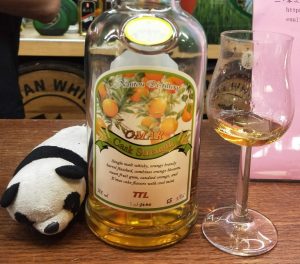
This dram is for the orange lover with notes of orange puree, orange zest, and orange flower water alongside some lovely notes of vanilla and honey from its prior maturation.
I am particularly fond of their bourbon cask strength, both peated and unpeated! But do not fret about the age statements. Due to a higher average temperature, maturation speeds are a lot faster than Scotland. A 3-year-old whisky at Nantou would taste similar to an 8 to 12-year-old whisky matured in Scotland. The 8-year-old cask strength is a special release; it feels like a 15-20-year-old scotch.
Omar 8yo 2009 Cask Strength
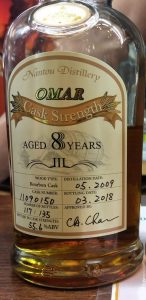
This 8yo is very soft and demure, giving notes of old oak, vanilla, pears and mandarin oranges!
Omar 3yo 2014 Peated Cask Strength
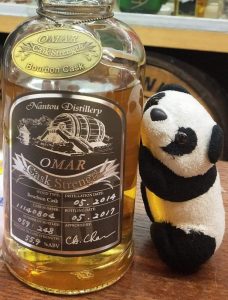
The 3-year-old peated cask strength displayed a high calibre of maturation, with the right balance of peat smoke. Water will draw out more smoke for people who love that note! This delicious yet affordable single cask would be good smoky daily dram!
Omar 10yo 2008 PX Sherry Cask
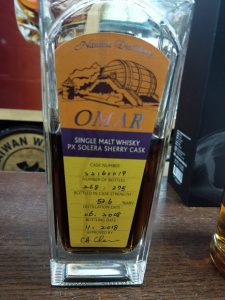
For sherry bomb lovers, this is an absolute sherry nuke or WMD! This is the result of 8 years in sherry hogshead before finishing in a PX cask for two years. This dram holds notes of Christmas cake, cinnamon, chocolate, plums and dried fruit!
Barley
TTL buys barley in bulk from multiple maltsters. Most of the unpeated barley is from maltsters in England, while most of the peated barley at 35ppm is from maltsters based in Scotland. The moisture content is also similar to specifications required in Scottish distilleries, around 4%.
Milling & Mashing

The barley is milled into grist with the standard ratio of 70% grist, 20% barley husk and 10% flour. Distilleries maintain specific ratios to assist in the filtration of wort and to prevent choking in the pipes. The grist is sent to a German semi-lauter mash tun with a charge of 120000L. Hot water is added three times; the first and second streams form the wort. The third stream, called the sparge, picks up the remaining sugars, but it is low in sugar. The sparge is not mixed with the first 2 streams, but to maximise sugar recovery. This is done by reusing the sparge for the first stream to be added to the next batch of grist.
Fermentation
The wort goes into one of the stainless steel washbacks to undergo fermentation, turning it into a strong beer called wash. In this stage, the yeast will start eating the sugar in the wort and produce carbon dioxide and alcohol. For Omar whisky, this fermentation process takes an average of 72 hours using French distiller’s yeast. This is slightly longer than the 48 hours of fermentation in most modern Scottish distilleries. The wash from Omar is around 7-8% alcohol by volume (abv).
Distillation
Pot stills
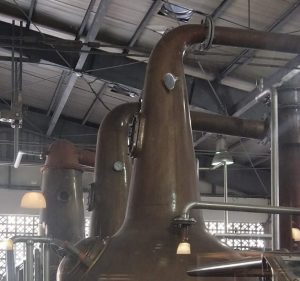 The wash goes into one of 2 wash stills to be distilled into low wines. This distillation removes the barley solids leaving mostly ethanol, water and aromatic compounds. The low wines are pipped into the spirit still for its second distillation to reduce water content. Nantou Distillery currently has 2 Wash Stills and 2 Spirit Stills. One spirit still is different, as it, strangely enough, has a window. The stills are of varying sizes, one at 7000L, two at 5000L and the last one at 2000L.
The wash goes into one of 2 wash stills to be distilled into low wines. This distillation removes the barley solids leaving mostly ethanol, water and aromatic compounds. The low wines are pipped into the spirit still for its second distillation to reduce water content. Nantou Distillery currently has 2 Wash Stills and 2 Spirit Stills. One spirit still is different, as it, strangely enough, has a window. The stills are of varying sizes, one at 7000L, two at 5000L and the last one at 2000L.
Cut of the Heart

There are three components in the spirit still distillate. The head comes first at a high abv, followed by the heart, which is what goes into the barrels, and lastly comes the tail which has a lower abv. The cut of the heart affects the new make spirit and how the whisky tastes. If the cut starts at a higher abv, the new make spirit gets lighter, fruity notes, but also more undesirable flavours from the heads. If the cut ends too low, it gets heavier flavours but risk lowering the final abv.
The master distiller decides how to balance these two points. For Omar, the cut of the heart is somewhere between 73% and 64%. This means that the stillmen sends distillate above 73% (heads) and below 64% (tails) into a tank to be redistilled. The heart that is within the range will go into barrels for maturation. Due to Taiwan’s legislation, Nantou Distillery reduces the strength of their new make spirit to just below 60% abv before filling in casks.
Maturation
Cask Management
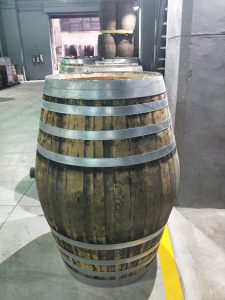
Nantou distillery receives the sherry and bourbon casks whole so that the cask maintains its inherent quality. Nantou distillery uses ex-bourbon casks up to 3 times. As for Sherry casks, there is no fixed numerical limit. Craftsmen will keep utilising the sherry cask until they deem it to be too exhausted to provide flavour. According to the tour guide, the sherry casks usually provides stronger flavours in Nantou’s climate, therefore using refill would give a more balanced dram.
3rd and 4th fill Bourbon casks are usually used for seasoning with wines or liqueurs. This is extraordinarily creative, because a 3rd or 4th fill cask may not provide as much cask influence, but they can act as a sponge to soak up the previous liquid. This means that such a seasoned cask would deliver the flavours of the previous content without over-oaking the product. These seasoned casks are used for the various Omar whisky finishes.
Warehouse

Most of Nantou distillery’s warehouses are racked for easy access to the individual cask. Amongst the racked warehouses, Nantou distillery also has a specially designed warehouse with space for future tasting events. This warehouse has an architecture heavily influenced by the sherry bodegas in Spain. The casks stacked up to three high and is a mimic of the solera system in a sherry bodega. Though the ceiling is lower, the arcs near the ceiling are similar to Bodegas in Spain. As a comparison, these are some pictures of the bodegas I visited in Jerez de la Frontera. On the left is Bodega Diez Merito, on the right is Bodega Fundador.
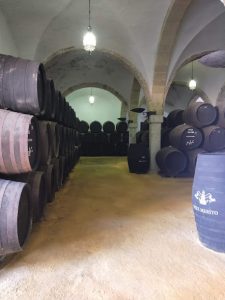
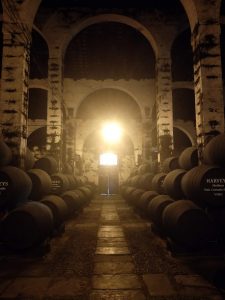
Distillery Expansion
Omar is looking to expand its production capacity by adding 3 more pairs of wash and spirit stills! The distillery is also undergoing renovation to accommodate larger tour crowds. In addition, Omar is continuing to experiment with new and different finishes! It is an exciting time ahead for Omar whisky and Nantou distillery is a must go on your Taiwan trip!
Special thanks to Nantou Distillery, Chairman Chung, and Ben for this enjoyable experience!

